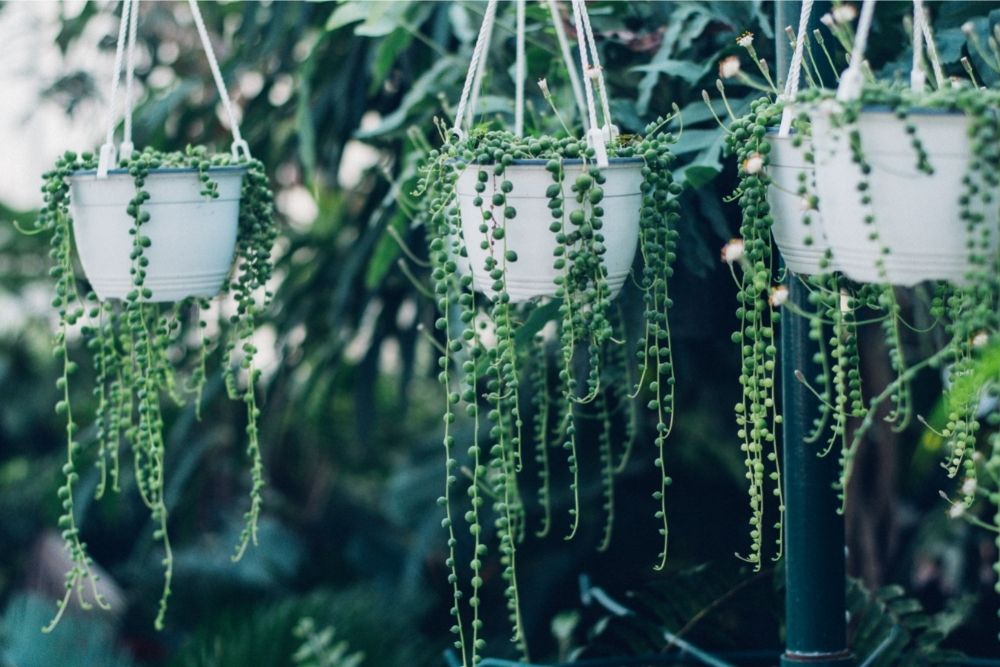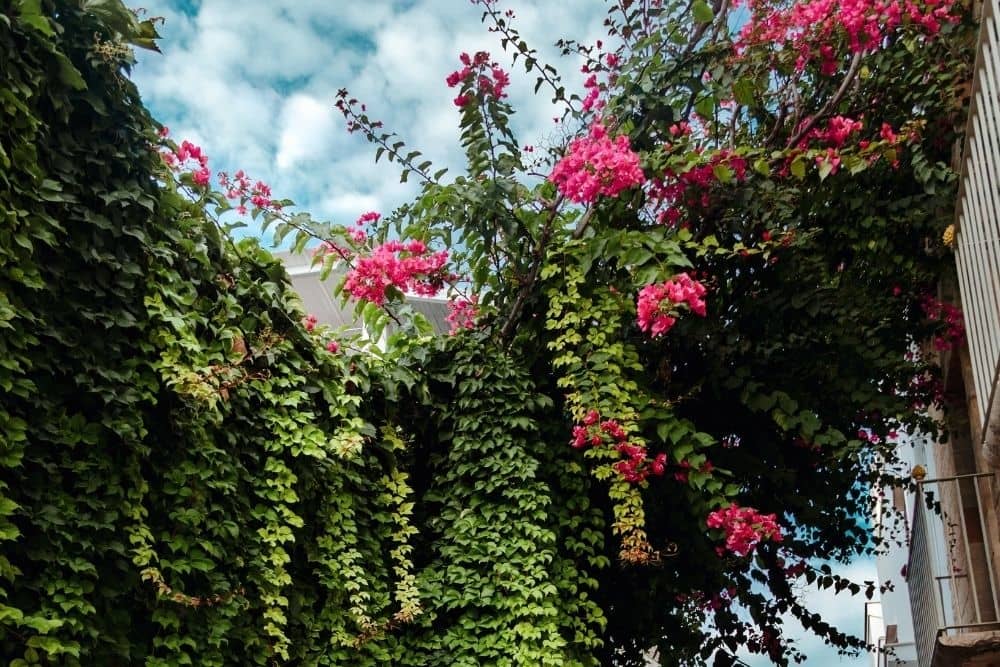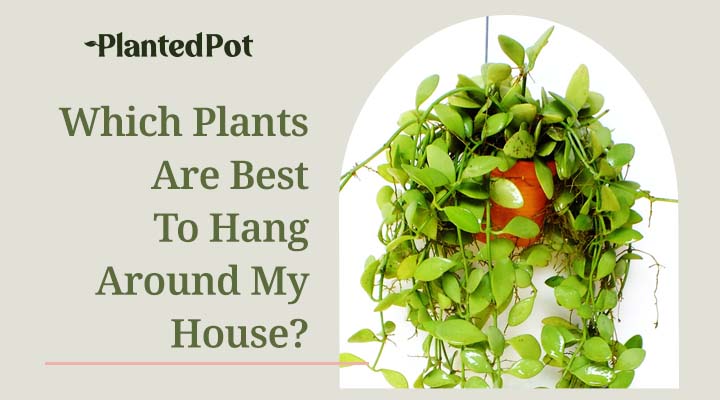
Vine House Plants: 10 Amazing Vine Plants To Get For Your Home!
Home / Vine House Plants: 10 Amazing Vine Plants To Get For Your Home!

Vine House Plants: 10 Amazing Vine Plants To Get For Your Home!
- Olivia Richman
- June 18, 2021
- 3:57 pm
- No Comments
Looking for indoor plants that are a bit more unique and exotic for your home? A vine house plant is one of the most striking plants you can own, thanks to its interesting growing behaviors. Instead of sitting in a pot and growing upwards, vine plants are always looking for ways to move about, whether that’s climbing up your wall or snaking around your bookshelf.
There are a lot of vine house plants out there, some with more care needs than others. However, each has its own gorgeous leaves and vibrant colors. So you’re bound to find a vine house plant that’s right for your room’s decor as well as your schedule. Let’s take a look at some of the most popular vine house plants out there and what will allow them to thrive and grow.
What Are Vine House Plants?
A vine house plant is simply a plant that climbs and trails when left to its own devices. If you don’t trim or prune your vine house plant, they will continue to creep up whatever is near them, whether it’s up the wall and around a door frame or throughout whatever you have in your bookshelf.
Climbing plants will often creep along the floor or up the wall until they touch something. That touch will trigger chemical changes in the plant that stimulate a climbing behavior. That’s when the plant will begin to grow against the direction of gravity, following the object’s shape.
Indoor vine plants are a great way to bring nature into your home since they have a unique look reminiscent of a whimsical forest or a peaceful garden. They can beautify any decor, adding an elegant and vibrant feel to your space whether they are kept in a hanging basket or allowed to trained to climb around a wall.
Are House Plants with Vines Hard to Care for?
Many vining houseplants are easy to care for. A lot of vining houseplants can be left alone aside from the occasional watering and pruning, allowing them to explore their space and essentially “do their own thing.”
Of course, each species has its own care requirements. Some prefer bright, indirect light, while others can thrive in the shade. Some need consistently moist soil (meaning more watering), while others don’t mind dry soil between waterings.
It’s important to look into each vining houseplant’s specific care requirements before purchasing so you can make sure it’s the right plant for your lifestyle. If you have less time to dedicate to plant care, consider a vining variety of succulents. If you plan to spend more time focused on your plants, feel free to pick a more delicate plant that’s a bit pickier when it comes to their needs, whether that’s misting or a lot of pruning.

Which House Plants Have Climbing Vines?
There are hundreds and hundreds of vining houseplants to choose from! There’s the ever-popular and easy-to-care-for Pathos, which often snakes around the home with ease. The String of Pearls is a delicate succulent that requires a bit of extra care. There’s Irish Ivy, a vigorous grower with glossy green foliage that’s fine in low light. The Black-Eyed Susan vine offers brilliant yellow or orange flowers when given enough sunlight.
While most climbing plants are found outside in garden spaces, many house plants with climbing vines can thrive indoors. These are species that are known to be a bit hardier, able to adapt to different conditions. They also won’t need as much maintenance, although they all have their own needs to keep in mind.
How to Trim Vine House Plants
The amount you need to prune your plant depends on the species. Some grow faster than others, while some become tangled or unsightly quickly if not managed. Other plant species may even start climbing into things or block doorways if you let them. So if you don’t have time to regularly prune your houseplant, consider a plant that requires less care and attention.
Keep in mind that all plants need pruning, but some just need it more than others. Pruning your vining houseplant will ensure they are healthy, appealing, and kept under control. By removing dead, damaged, and diseased stems, pruning can also direct and limit a plant’s growth. Just remember that pruning inspires more growth, meaning your plant may become bushier or fuller after each trimming.
When pruning your vining houseplant, this is what you should do:
- Use clean pruning equipment that has been cleaned and sterilized.
- Cut to healthy wood when removing dead, diseased, or damaged growths.
- Cut to a bud or stem that is pointing in the direction you want the vine to go.
- Don’t leave a stub, or your plant might get diseases or bugs. Make sure the cut is always clean.
What Are the Best Vine House Plants?
There are a lot of vine houseplants with a lot of different behaviors, appearances, and needs. That means there’s definitely a vine houseplant out there that meets your specific preferences and schedule. Here are some of the most popular vining house plants, most of them easy to care for and stunning in their own way.
Pothos
Pothos is a widely popular houseplant because it’s quite hardy, and even new plant owners will have a tough time killing it. Their small, green leaves look sophisticated in any space, especially when their vine is draped along the wall or around doorways. Pothos need frequent pruning to stay looking vibrant.
Philodendron
Philodendrons are beautiful with their large green leaves and yellow stripes. Like the Pothos plant, the Philodendron is low maintenance and easy to care for. They prefer bright, indirect light but will adapt to low light conditions if necessary.
You can keep them in a study, allowing them to twine throughout your bookshelves and cabinets. Or maybe you want to hang a Philodendron from your patio and allow it to grow alongside your house. Remember to prune them often to keep your Philodendron happy!
Ivy
Ivy is a very popular indoor vine plant due to the elegant way it climbs about your space. A lot of people keep it in patios or sunrooms since this dainty vining houseplant loves bright light. You can also place it near a window that gets a lot of sunlight. An ivy’s leaves range from deep green to variegated white and yellow, adding a pop of color wherever it goes.
Black-Eyed Susan
The Black-Eyed Susan is a favorite due to its bright yellow or orange flowers. It loves the sun and can grow up to six feet if given enough of it. It’s usually kept in hanging baskets, allowing its green foliage and vivid flowers to dangle brilliantly.
This vine plant is super popular due to its versatility and colors. Hang them outside in the summer if it’s hot enough in your area, and watch the Black-Eyed Susan thrive!
Hoya
With curly, pale green leaves and elegant flowers, Hoyas are a striking vine house plant that makes a statement in any room. They are often kept in an urn or pot, allowing them to climb around their immediate surroundings gracefully. This delicate beauty is not a fan of direct light (they’ll get scorched), and they prefer their soil slightly moist.
Burros Tail
The Burros Tail, aka Donkey’s Tail, is a succulent plant with a unique appearance. Different “tails” of waxy, bright green leaves come out of the pot in thick rope-like clusters. Some people claim that the Burros Tail also looks similar to braided hair, prompting some cheeky plant owners to keep this unique plant in head-shaped planters. Whatever you choose, just make sure their soil is kept dry, and they are not kept under direct light.
Creeping Fig
This delicate yet striking plant has long, trailing vine-like stems with bright green papery leaves. The leaves will become thick and waxy over time. It’s often kept in a hanging basket, allowing the plant’s long, pretty stems to hang over the sides. The Creeping Fig is known to grow quite quickly when given indirect light and occasional watering.
Arrowhead Plant
If you’re looking for something a bit more robust, consider the Arrowhead Plant and its busy foliage. This is a hardy vining houseplant with large leaves in the shape of an arrow’s head (hence the name). The leaves feature lighter green lines throughout.
Let these stunning leaves hang over the side of a hanging basket, creating a vibrant look wherever they go. Arrowhead Plants need pruning to have a bushier appearance. They also like bright, filtered sunlight.
Peperomia
Peperomias are small but hardy houseplants known for their distinct foliage. The leaves, which are thick and shiny, can be striped, marbled, or speckled. They are often kept on a shelf or a hanging basket, giving guests a proper view of their cascading foliage. Give this trailing plant a bright spot under direct sunlight, water whenever the soil gets dry, and an occasional misting.
String of Pearls
There is no plant quite like the String of Pearls. The warm green succulent has string-like stems that flow out of the pot like waves or a formal hairstyle. Each stem is covered in balls (the pearls). Because of this, the String of Pearls is very delicate and must be handled gently. Keep them in a brightly lit area for optimal growth.

Final Thoughts – Vine House Plants
Whether you’re looking for a dainty plant that elegantly hangs over the side of a hanging basket or an exotic vine that climbs up your wall and around your doorways, vine house plants are getting more and more popular because of their bold and beautiful appearance. With unique leaves and interesting behavior, these indoor climbing plants are a great addition to any room that needs a boost of color and life.



